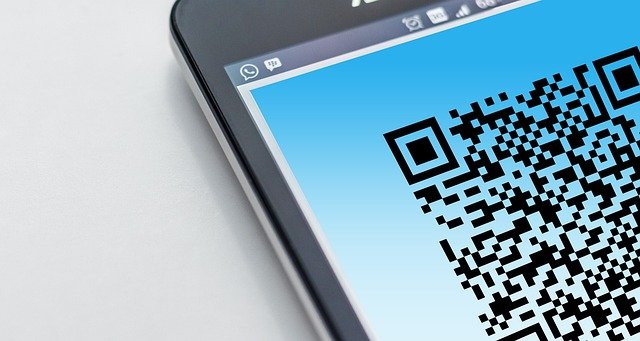Handling returns, repairs, and warranty claims across borders
Cross-border returns, repairs, and warranty claims for used smartphones introduce layers of technical, legal, and logistical complexity. From IMEI and carrier locks to customs, taxes, and shipping insurance, buyers and sellers must manage multiple checkpoints to avoid delays, additional costs, or fraud. This article outlines key steps to preserve value and resolve issues when devices move between countries.

Cross-border returns, repairs, and warranty claims require careful documentation and realistic expectations. A used smartphone moving between jurisdictions can encounter carrier locks, differing warranty rules, customs inspections, and variable repair standards. Whether you are a buyer, seller, reseller, or repair shop coordinating an international claim, understanding how IMEI status, authenticity checks, shipping liability, and local regulations interact will help reduce disputes and speed resolution while protecting both parties from fraud and unexpected fees.
How does IMEI and authenticity affect returns?
IMEI status is often the first checkpoint for cross-border returns. Customs agents and carriers may flag devices with blacklisted or reported IMEIs, preventing import, export, or activation on local networks. Before shipping, verify the IMEI against carrier and registry databases and include proof of purchase or serial documentation that demonstrates legitimate ownership. Authenticity checks—presence of original serials, manufacturer labels, and consistent hardware/software identifiers—help returns processing and protect buyers from receiving counterfeit or tampered units. Maintain time-stamped photos and a written condition report to support return claims.
What are network unlocking and carrier rules?
Network locking complicates cross-border repairs and returns: a phone locked to one carrier may be unusable in another country. Carrier unlocking policies vary by provider and jurisdiction; some require account standing, proof of purchase, or a waiting period. When returning or repairing a device, note whether the carrier or seller agrees to unlock for testing. If you rely on third-party unlocking, document the provider, method, and any warranty implications—manufacturer warranties sometimes void if non-authorized services modify firmware or unlock bootloaders.
How should battery, inspection, and refurbishment be handled?
Battery health and visible repairs heavily influence acceptance of returns and warranty eligibility. Create a standardized inspection checklist that reports battery capacity, screen condition, water damage indicators, and replaced components. For refurbishment, document which parts were changed and whether OEM or third-party parts were used. Many repair networks offer graded refurbishment certificates that speed resale and cross-border clearance. For returns involving battery issues, include cycle count and diagnostic logs when possible; this information reduces back-and-forth and supports clearer warranty outcomes.
How do warranty and cross-border repairs work?
Manufacturer warranties are typically tied to the country or region of purchase and may not apply internationally. Authorized service centers outside the original market might be able to perform paid repairs but could decline warranty coverage. For cross-border claims, always check the manufacturer’s international warranty policy and whether the device’s serial and IMEI are registered to the original purchase region. If buying from a marketplace, clarify seller-return windows and who bears shipping and customs costs for warranty repairs. When possible, route warranty claims through an authorized local partner to preserve coverage and parts authenticity.
What customs, taxes, and shipping considerations apply?
Returning or repairing devices across borders triggers customs classification, potential duties, VAT/GST, and inspection delays. Properly label shipments as ‘repair’ or ‘return under warranty’ and include clear documentation such as pro forma invoices, proof of original export, and RMA numbers. Choose a shipping method with tracking and declared value aligned to the real repaired or returned value. Consider bonded courier services or temporary importation regimes (where available) to reduce duties on shipments explicitly intended for repair. Factor in customs brokerage fees and local taxes when estimating total cost and timelines.
Real-world cost insights and comparison
Shipping, inspection, and repair costs vary widely by route and service level. Below is a representative comparison of common services used for cross-border returns and repairs. These entries illustrate typical cost bands rather than fixed prices.
| Product/Service | Provider | Cost Estimation |
|---|---|---|
| International express shipping (small electronics) | DHL Express | $30–$200 depending on weight, route, and speed |
| International express shipping (small electronics) | FedEx International | $35–$220 depending on route and options |
| Diagnostic and battery replacement (third-party repair shop) | uBreakiFix / Asurion locations | $50–$150 depending on model |
| Out-of-warranty manufacturer repair | Apple Authorized Service | $99–$699 depending on damage and model |
| Refurbishment/resale service fees | Back Market / Swappa (marketplaces) | 0–15% seller fees; platform shipping varies |
Prices, rates, or cost estimates mentioned in this article are based on the latest available information but may change over time. Independent research is advised before making financial decisions.
How do insurance, fraud prevention, payment, and resale interact?
Insurance and payment protection are important when devices cross borders. Insure shipments for the declared value and verify insurer coverage for international claims. For marketplaces and escrow services, retain transaction records, tracking, and buyer/seller communications to resolve disputes and reduce fraud risk. Inspect returned devices immediately on receipt; document discrepancies with photos and diagnostics to support insurance or payment disputes. For resale, present verified inspection records, IMEI checks, and refurbishment history to build buyer trust and reduce chargebacks. Wherever possible, use payment platforms with seller and buyer protection and avoid cash-only arrangements for cross-border deals.
Cross-border handling of used smartphones brings technical, legal, and logistical challenges that are manageable with clear documentation, proper shipping practices, and a realistic view of warranty scope. By verifying IMEI and authenticity, understanding carrier and manufacturer rules, documenting inspections and refurbishment, and planning for customs and insurance costs, stakeholders can minimize disputes and preserve device value when claims span borders.






